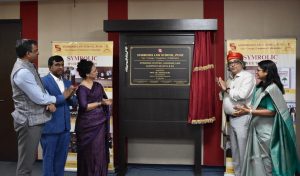Election Commission asserts EVMs used in elections are tamperproof
New Delhi | March 16, 2017 : The Election Commission has dismissed the concerns raised by some political parties over the “efficacy and safety” of the Electronic Voting Machines (EVMs). In a detailed press note issued today, EC has asserted that the machines used during elections in the country are “tamper proof.” It said “ECI unequivocally reiterates that given effective technical and administrative safeguards, EVMs are not temperable and integrity of electoral process is preserved.
EC has said , EVMs in India are a standalone machine without being linked to any network and with no provision for any input. Giving details of the procedure followed between voting and election results, the EC said the machines are readied and sealed in the presence of the candidates and their agents.
Giving details of the technical specifications, the EC said “the machine is electronically protected to prevent any tampering/manipulation. The programme (software) used in these machines is burnt into a One Time Programmable (OTP)/Masked chip so that it cannot be altered or tampered with. Further these machines are not networked either by wire or by wireless to any other machine or system. Therefore, there is no possibility of its data corruption. The software of EVMs is developed in-house by a selected group of Engineers in BEL (Defence Ministry PSU) and ECIL (Atomic Energy Ministry’s PSU) independently from each other. After completion of software design, testing and evaluation of the software is carried out by an independent testing group as per the software requirements specifications (SRS).
EC has asserted that it has put in place an elaborate administrative system of security measures and procedural checks-and-balances aimed at preventing any possible misuse or procedural lapses.
Since 2000, EVMs have been used in 107 General Elections to State Legislative Assemblies and 3 General Elections to Lok Sabha held in 2004, 2009 & 2014.
Introduced after a prolonged political discussion, followed by administrative and technical consultations that began in 1979, EMVs have been credited by the commission for not only shortening the election process, but also helping in stemming malpractices such as booth capturing and bogus voting.








